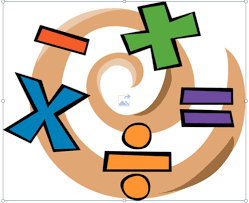Perhaps the biggest change to your business and individual taxes is the Section 199A, Qualified Business Income Deduction (QBID). Your complimentary trip down Memory Lane (aka link to a Carol McAtee archived blog) – TCJA and What in the World is Section 199A
Today we are going a bit in depth on figuring out how much the QBD will be worth to you as a deduction on your 1040.
REINFORCING THE BASICS.
The Deduction. The gist of it is you may be able to deduct up to 20% of the qualified income of EACH AND EVERY of your qualified business(es) (QBI) earned depending on what your business is and how much taxable income (TI) you have sitting on your “Building Block” 1040 (last week’s blog). We highly recommend refreshing your memory of our blog from 10/31/18 by clicking the above link.  Are you below the TI amount, in between TI amounts, or over the TI amount? You could get all, or some, or none of that 20%. Below the TI amount gets you a full 20% deduction. In between and over the amount requires calculating W-2 wages and qualified property.
Are you below the TI amount, in between TI amounts, or over the TI amount? You could get all, or some, or none of that 20%. Below the TI amount gets you a full 20% deduction. In between and over the amount requires calculating W-2 wages and qualified property.
THE AMOUNTS.
Full Deduction. If you’re married Filing Joint (MFJ) with TI less than $315,000 or All Other Taxpayers (AOT) with TI less than $157,500, you will be able to deduct the full 20% of qualified business income. When TI is below the Floor Amount it does not matter if you are a Specified Service or Trade Business (SSTB) or not.
Partial Deduction. The partial deduction comes in to play if you have TI BETWEEN $315,000 and $415,000 MFJ (Note the $100K range for TO BE FINISHED UP LATER section) and BETWEEN $157,500 and $207,500 (Note the $50K range for TO BE FINISHED UP LATER section) All Other Taxpayers (AOT). When TI is between the Floor and Ceiling amount it does not matter if you are a Specified Service or Trade Business (SSTB) or not. To be finished up later.
Limited Deduction. The subject to limitation comes in to play if you have taxable income MORE THAN the Ceiling amounts of $415,000 MFJ and $207,500 AOT. If you are an SSTB, no deduction for you. If you are not an SSTB, a limited deduction for you. To be finished up later.
THE QBID CALCULATIONS.
Both the partial deduction and the limited deduction require calculating THE GREATER OF: A. 50% of W-2 wages of the qualified trade/business OR B. 25% of those same W-2 wages + 2.5% of the unadjusted basis after acquisition of all qualified property.
A. 50% of W-2 wages of the qualified trade/business. After calculating wages IAW IRS Rev. Proc. 2019-11, IRS Rev. Proc. 2019-11, Determination of W-2 Wages, the calculated W-2 wage amount must be property allocable to the qualified business (or portion). W-2 wage amounts consist of the below and as filed with the Social Security Administration:
Box Description
1 Wages
5 Medicare Wages and Tips
12-D Elective deferral to 401(k) and SIMPLE 401(k)
12-E Elective deferral to 403(b) salary reduction agreement
12-F Elective deferral to 408 (k) (6) salary reduction Simplified Employee Pension
12-G Elective deferral & Employer contributions to any 457 (b0 plan
12-S Employee salary reduction to 408 (p) SIMPLE
12-AA Designated Roth contributions to a 401 (k)
12-BB Designated Roth Contributions to a 403 (b) salary reduction agreement
The three methods of calculating wages are:
1. Unmodified Box Method. Straight off the W-3, Transmittal of Wage and Tax Statements, the lesser of Box 1 or Box 5.
2. Modified Box 1 Method. Total amount in Box 1 less those amounts in Box 1 that are not wages for Federal income tax withholding purposes. Examples include: employee business expense reimbursements under an accountable plan, insurance for employees, some annuity payments, any amounts paid to an employee of sick pay, salary-reduction contributions to retirement plans, and supplemental unemployment benefits. And then add Boxes 12-D, Box 12-E, Box 12-F, Box 12-G and Box 12-S. In most cases this gets you to Box 5.
3. Tracking Wages Method. Is practically exactly the same as the Modified Box 1 Method. We don’t anticipate many, if any, scenarios that would warrant using this method.
B. 25% of those same W-2 wages +2.5% of the unadjusted basis after acquisition of all qualified property. Basically, this is the day you start using it and how much it cost you.
Qualified property. Is things you can touch AND depreciate and whose depreciation period has not ended prior to the last day of the applicable tax year. The depreciation period begins the day the property is place in service and ends the LATER of 10 years OR the last day of the last year of the asset’s regular depreciation period. If you normally depreciate a vehicle for five years, you can QBID calculate it for 10 years. If you have that vehicle in year 11, it won’t count anymore. If you depreciate a piece of equipment for 15 years, you can QBID calculate it for 15 years.
FINISHED UP LATER.
Partial Deduction. For this range of TI between the Floor and Ceiling amounts, you first determine the “excess amount” and second, reduce that (excess) amount by a percentage. Excess amount: Calculate the tentative deduction which is QBI x 20% and then, do THE QBID CALCULATIONS. And remember to select THE GREATER OF A OR B for  subtraction from the tentative QBID. You now have the excess amount.
subtraction from the tentative QBID. You now have the excess amount.
Percentage: TI less the low end of the range divided by the range. For MFJ: ((taxable income – $315,000)/$100,000). For AOT: ((taxable income – $157,500)/$50,000).
Times the Excess Amount by the Percentage and subtract from the tentative QBID.
You’re single and had taxable income of $190,000 and QBI of $175,000. Your calculated amount of A. business W2 wages is 30,000. Your calculated amount of B. 25% wages and 2.5% property is $10,000.
Tentative QBID = $175,000 x 20% = $50,000
GREATER of A or B calculation = $30,000
Excess Amount = $50,000-$30,000 = $20,000
Percentage = $190,000 – $157,500 = $32,500; $32,500/$50,000 = 65%
Excess Amount x Percentage = $20,000 x 65% = $13,000
QBID = $50,000 – $13,000 = $37,000
Limited Deduction.
If you are an SSTB just stop here, you’re done; no deduction at all for you. Taxed on every penny of business income.
If you are NOT an SSTB, do THE QBID CALCULATIONS. QBID = quite simply THE GREATER OF A OR B.
WHAT ELSE SHOULD I KNOW?
1. If you have an S-Corp(s) or rental property(ies). Call Carol First and Soon.
2. For 2018, any asset that was fully depreciated prior to 2018 and placed in service before 2009 doesn’t count as qualified property.
3. It might be a good time to spring clean the fixed asset list.
4. If you were like WTH at the “EACH AND EVERY”, call Carol and ask about “aggregation.”
Reach out to McAtee & Associates for answers and guidance all things tax and accounting. Carol would enjoy doing some tax planning and advising with you and assisting you with tax preparation and filing.
info@accpas.com OR 727-327-1999.
Check back here next week for a new and entertaining blog. And be sure to like us on Facebook and follow us on Twitter; for whatever it is we’ll be posting.
